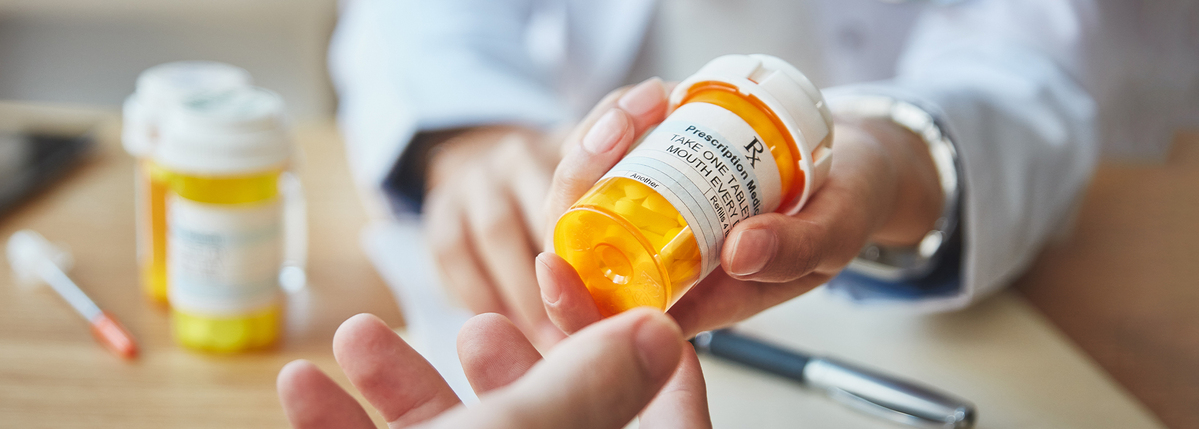How 30 minutes of physical activity a day can help you manage diabetes
Written by: Ginger Vieira
7 minute read
December 9, 2021
Learn how even just 30 minutes of daily physical activity can have a big impact on your blood sugars and overall diabetes health.
This educational content is brought to you by the ADA x BT1 Collab.
The following transcript has been edited for length and clarity.
Ginger Vieira: Welcome to Collab Conversations with the American Diabetes Association and Beyond Type 1. My name is Ginger Vieira. And today, I am with Charlene Wallace, director of the National Diabetes Prevention Program. Thank you, Charlene, for coming and talking to us today.
Charlene Wallace: Thank you, Ginger. I’m excited to be here.
I am a big fan of the DPP, the Diabetes Prevention Program, because I know it really is a lot about the basics of a healthy lifestyle. And one of the big things you guys focus on is exercise, or the phrase I know you’re more fond of.
Physical activity. And we do, we really like to use the word physical activity versus exercise. Exercise kind of puts in this mindset of going to the gym and having to spend hours on a treadmill or all these sweaty body builders, flexing in front of the mirror. Physical activity is a little less intimidating. So I like to use the word physical activity because it can encompass so much more that way.
So why is it so helpful to preventing or managing diabetes? Why is physical activity such an important part of the recipe?
So physical activity does so many good things for our body. Physical activity actually helps our cells use insulin more efficiently, so that helps us with managing, but there’s so many other benefits. When you incorporate physical activity into your life, you improve your balance and your flexibility, which is really important, especially as we age and as we age at any age, that’s really important to prevent injuries or falls.
Those types of activities are really helpful, but it also reduces your blood pressure and your risk for cardiovascular disease. So not only a plus for diabetes and diabetes prevention, but also other chronic conditions.
Physical activity does a lot of work around that. It also helps you sleep better. And who couldn’t use more sleep? And just being able to reduce your stress. And it seems counterintuitive, but exerting yourself and getting physical activity actually gives you more energy. You feel more energized and more ready to do things.
I think that’s an important thing I know is very true in my body, but for someone who hasn’t gotten into the habit yet, there’s often this idea of, “Well, I’m tired. I don’t have the energy to do it.” But it actually… I crave it when I’m tired, because I know that through just experiencing it, that it gives me more energy and it charges my battery for the rest of the day.
Yeah, exactly.
Okay. So if we talk specifically about how much physical activity you could benefit from, even just 30 minutes a day, a half hour a day of purposeful physical activity, can you tell me about what that could do for someone, either in preventing diabetes, reducing your risk, or managing your already diagnosed diabetes?
Absolutely. Physical activity really—and it doesn’t have to be a large amount—30 minutes a day is great. When we talk about the goals of the National Diabetes Prevention Program, we do about 150 minutes a week of moderate physical activity. So that is exercising to the point where you can still talk, but you can’t sing. So that gives you a little gauge on how intense your physical activity needs to be.
Okay. And when I hear 150 minutes… I don’t like math, so my first thought is like, “Oh, how do I spread that out over the course of seven days?” What does that really look like?
So if we look at it…it’s about 30 minutes of physical activity, five days a week. So not not necessarily even having to exercise or get physical activity every single day, but making sure that most of the days of the week, you’re actually out there and getting some physical activity for yourself.
Okay. And if it’s, let’s say, 15 minutes in the morning and 15 minutes in the afternoon, is that the same?
Absolutely. You can break it up. Some people will work to wake up 15 minutes earlier in the day, just so that they can put on a video, and they’ll get 15 minutes of physical activity there. And then maybe they will do a five minute walk at lunch and then maybe while their kids are at the soccer field practicing, they walk around the track for another 10 minutes. And then you have an easy 30 minutes just in one day, and it doesn’t even take out of your schedule. You don’t have to schedule it specifically.
Yeah, that’s not as daunting if you’re already feeling overwhelmed, you don’t know where you’d fit in, or “I don’t want to have to get to the gym.” And that requires driving there, plus 30 minutes of being there, plus 15 minutes after getting ready for work. Just 15 minutes. So, let’s talk about some simple 15 minutes twice a day or 30 minutes once a day that you could really do at home that doesn’t require a gym membership or a new class.
Exactly. There’s so many different options. So have you ever thought about physical activity doing housework or yard work? It’s fall now, so all of those leaves are coming off the trees and they’ve got to get raked. That’s something that really requires some strength to be able to use and lift and move the rake and the leaves and haul things around. So not only are you incorporating some cardio in doing that, but you’re also doing some strength training, too. And then your yard is cleaned up and it has to get cleaned up anyway, right?
Right. Somebody’s gotta do it, right?
Somebody’s gotta do it.
Or put together your favorite playlist of music. Then go dancing in the kitchen for 10 minutes in the morning and another 20 minutes in the evening with your kids. It doesn’t have to be like, “I am now exercising.” It can just be moving your body at a more intense rate than normal, everyday life.
I always tell people, “Experiment.” You never know what you might like until you’ve tried it. And there are so many places out there that either give a free membership, or give you a trial free class. You can go to a dojo. Try karate for a month. Who knows? That might be your thing. Or tai chi.
Remember that there’s always beginners in everything. You’re not the only person that’s showing up. Or if you’re not comfortable with that extroverted step of going to a class, there is so much on YouTube. Every type of group fitness class is now available on YouTube that you can do right in your living room.
Exactly. If there is maybe one bright spot of the pandemic, it is that industry has just blown up. There are so many different options of doing things, either on the internet or through YouTube or social media, lots of different things. Those TikTok challenges, of course. I might be a little old for that.
I did a 10-minute at home ballet class with my seven year old this summer. And it was a lot of work and it was for kids on YouTube. I was sore the next day. But it was also mellow, it was easy on my joints, and she had fun. There were princesses and glitter in there. There’s just so many options.
And you got to hang out with your daughter for extra time.
And taught her about physical activity as well.
Exactly. And the more we can incorporate our family, the more can kind of ingrain that into a lifestyle change. It doesn’t have to be, “I’m no longer doing this. I am now doing this.” It can be about those little steps that can just make a huge difference for people.
Okay. So if someone is starting at square one, they’re not really engaging in any purposeful physical activity at all, what would be the recommendation for getting started? Because five days a week, 30 minutes a day might be a lot at first.
So start small. Number one, make sure that you’re talking with your healthcare provider. Are there any concerns about you starting to do physical activity? If there are, make sure that you address those. Safety is number one. It’s important to make sure you’ve got good, solid shoes if you’re going to be out there walking. Make sure that you’re hitting all of those safety pieces. Nobody should ever go from zero to doing some sort of crazy CrossFit thing at 100 percent. So take those small steps.
And if you’re taking insulin or another medication that can cause low blood sugars, the timing of when you exercise versus when you just took insulin is very important to learn with your doctor’s help to prevent low blood sugars.
Yeah, that is absolutely important and such a great point, because you do have to watch out for low blood sugars, because that could cause a concern as well. And start small. Set goals. One of the participants we had that participated in the Diabetes Prevention Program was a woman who couldn’t even walk out to her mailbox when she started. So she started and she would go halfway to her mailbox and back. And she’s not running it, she’s just walking, and eventually by the time she got to the end of the program, she was able to take multiple trips back and forth. But she set goals, she figured out, “What is realistic and doable for me?” And then worked towards those little bits at a time. It’s those small steps that really make a big difference.
And it’s not a feeling you have to do it all right from the start. It doesn’t have to be 30 minutes starting right now. If you can make 10 minutes happen, work towards that five days a week and then progress.
Right. And if you don’t meet your goal, that doesn’t mean that all is lost. You just start the next day. Every day is a new day, and it’s important to just get out there and try. And sometimes it’s really helpful for people to track their physical activity, too. When you track and you see what you’re doing, you can be like, “Man, I need a pat on the back for last week because I was rocking it.” And you can say, “Holy cow. I walked, I rode my bicycle, maybe I swam. And boy, that next day on Wednesday I felt really great.” You can start putting those connections together in your head.
I still track. I love exercising, but I still track it on this giant marker board because I love to look at the calendar and see what I already did. I take rest days, but I hate to have too many days that don’t have anything on them, so writing it down helps remind me and motivate me to make sure I make time for it each day.
No, that is a great, great idea. Good suggestion.
And there’s so many fitness tracker apps if somebody’s more technology inclined. I’m pretty old school. I like markers.
Technology can be great. It’s not for everybody, but there are so many different options out there that can track your steps, track your miles.
And for any of us that are challenged with especially type 2 diabetes or prediabetes, that’s very common for it to be more prevalent in families. So the more you can incorporate and teach these lifestyle skills to your entire family, the more successful you are going to be, but the more successful your kids, your grandkids, your spouse, everybody will be in your family.
Right. Cool. Well, thank you. It seems very daunting to someone who might not be engaging in physical activity five days a week, but it’s really about keeping it simple.
Exactly. And just asking yourself, “What are you going to do today? What’s your step today?”
Right. Cool. Thank you, Charlene.
Very good. Thank you.

Author
Ginger Vieira
Ginger Vieira is an author and writer living with type 1 diabetes, celiac disease, fibromyalgia and hypothyroidism. She’s authored a variety of books, including “When I Go Low” (for kids), “Pregnancy with Type 1 Diabetes,” and “Dealing with Diabetes Burnout.” Before joining Beyond Type 1 as digital content manager, Ginger wrote for Diabetes Mine, Healthline, T1D Exchange, Diabetes Strong and more! In her free time, she is jumping rope, scootering with her daughters, or walking with her handsome fella and their dog.
Related Resources

You may need to switch your type 2 medications at some point in the year....
Read more

Getting the medications, services and supplies you need to manage your type 2 diabetes should...
Read more

Sadly, not all type 2 diabetes medications, devices and services are covered by health insurance...
Read more

